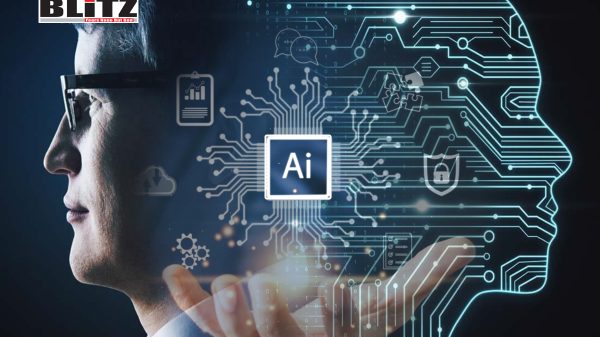AI and human collaboration shaping the future workplace
- Update Time : Saturday, January 4, 2025

For decades, the evolution of software has transformed workplaces by improving how data is managed. Initially, this transformation involved digitizing vast amounts of paper records, which were then stored in databases for easier retrieval. These early systems simplified processes like filing and document organization, offering a more efficient alternative to sifting through physical records. However, the majority of actual work still relied on human effort. Travel agencies, human resources departments, and hospitals, for example, used these tools as advanced filing systems, but the analysis, interpretation, and action were carried out by people.
The advent of the cloud era marked another significant milestone. Cloud technology eliminated the need for on-premise hardware, replacing bulky office servers with large offsite systems. This made data storage cheaper and more accessible, allowing employees to work more flexibly. Despite these advances, the fundamental reliance on human labor remained unchanged. Cloud-based systems primarily acted as centralized repositories, enabling tasks like customer service, financial record management, and communication to be performed more smoothly, but still requiring manual intervention.
Today, however, a new wave of technological advancement is reshaping the workplace landscape. Artificial intelligence (AI) is no longer just a tool for organizing and processing data; it has begun to take on tasks traditionally performed by humans. This shift is not merely incremental but transformative, enabling AI to handle complex and diverse functions that were once thought to be beyond its capabilities.
Just a few years ago, envisioning AI systems managing legal documents, responding to customer inquiries, tracking payments, or scheduling appointments in multiple languages seemed like a distant possibility. Yet, these innovations are now becoming realities. AI prototypes and early implementations have demonstrated their potential to bridge labor gaps effectively, presenting compelling economic and practical advantages for organizations.
Historically, software accounted for a relatively small portion of corporate budgets. It was viewed as a means to enhance productivity rather than replace labor. Companies needed to hire more personnel to meet growing workloads, even as their software tools improved. With AI, this equation is changing. Tasks like answering customer inquiries or managing routine emails, which traditionally required a dedicated team, can now be automated. AI systems operate 24/7 at a fraction of the cost, making them highly attractive from a business standpoint.
The transformative impact of AI is particularly evident in customer support roles. Early chatbots were rudimentary, often frustrating users with their limited capabilities. Today’s AI-driven systems are far more sophisticated, trained on extensive datasets and capable of generating coherent, contextually appropriate responses in real time. These modern systems go beyond simple FAQ interactions, learning the intricacies of a company’s offerings, referencing past customer interactions, and tailoring their tone to different audiences. They can independently handle a significant volume of routine tasks, allowing human employees to focus on more complex issues and act as supervisors or “managers” of AI operations.
This transition extends beyond customer service into sectors like healthcare, finance, and compliance. In healthcare, AI can process patient forms and streamline administrative tasks, enabling medical staff to dedicate more time to patient care. In finance, AI systems can track overdue payments, issue reminders, and even negotiate payment plans. Compliance departments use AI to flag suspicious activities and prepare initial reports for human review. Fields like insurance underwriting, market analysis, and creative brainstorming are also experiencing shifts as AI takes on responsibilities once managed by entire teams.
However, the growing role of AI raises important questions about employment and skills. As AI automates many operational tasks, the roles of human employees will inevitably change. Historically, technological advancements have led to both the displacement of certain jobs and the creation of new opportunities. For example, when software digitized record-keeping, it did not eliminate HR departments but instead shifted their focus from managing paper forms to engaging in more strategic, human-centered initiatives.
AI’s rise promises a similar reallocation of responsibilities. Tasks requiring emotional intelligence, complex problem-solving, and physical presence will likely remain within human expertise. Nonetheless, this transition will not be seamless. Organizations must actively plan for reskilling and redefining roles to ensure that employees can adapt and thrive in AI-augmented workplaces.
What makes the current wave of AI-driven change particularly disruptive is the breadth and depth of tasks it can perform. Unlike earlier technologies that were limited to predictable, mechanical processes, modern AI systems can analyze nuanced language, generate personalized content, and adapt to new information in real time. These capabilities make AI indispensable in operations where speed, consistency, and scalability are critical. Organizations are now faced with a compelling question: Should they continue paying human workers for tasks that AI can perform faster and at a lower cost?
Despite AI’s impressive capabilities, it is essential to acknowledge the unique qualities humans bring to the workplace. AI cannot replicate the creativity that arises from lived experiences, the warmth of genuine human interactions, or the depth of relationships built on trust and empathy. Therefore, the real opportunity lies in creating a synergy between AI and human effort. By relieving employees of repetitive and mundane tasks, AI enables them to focus on strategic thinking, innovation, and building meaningful connections with customers and colleagues.
For organizations, the challenge is to embrace AI thoughtfully and responsibly. This involves developing robust frameworks, establishing safeguards, and creating strategies to integrate AI as a collaborative partner rather than a replacement for human labor. Companies that succeed in navigating this transition are likely to gain a competitive edge, while those clinging to outdated models risk falling behind.
In summary, AI represents a fundamental shift in how work is performed. It moves beyond data management to take on tasks traditionally handled by people, transforming industries from healthcare to finance and beyond. While this change presents challenges, it also offers immense potential for growth and innovation. By leveraging AI as an ally, organizations can enhance efficiency, reduce costs, and empower their workforce to focus on high-value, human-centric activities. The key to success lies in balancing the capabilities of AI with the irreplaceable qualities of human insight and ingenuity.
















Leave a Reply